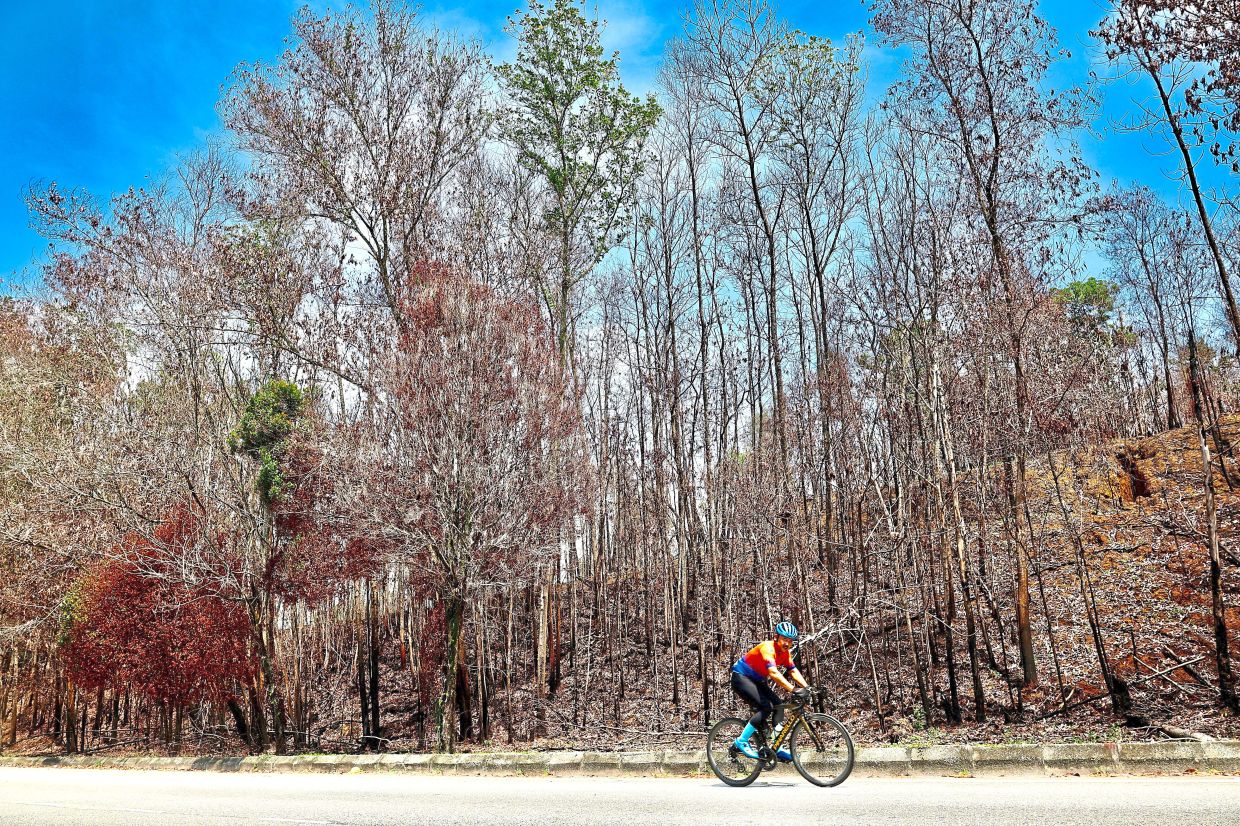
TOO HOT TO HANDLE?
The heatwave phenomenon across the globe has impacted humans, animals and crops negatively, but Malaysians can expect a turn for the better
HUMANS are remarkably fragile creatures, aren’t we? Mishaps such as a trip and fall, or even changes in temperature - could incapacitate or prove fatal to us. The most recent example is of dedicated pilgrims who lost their lives when they performed the Haj - the annual pilgrimage made by Muslims to Mecca.
All financially and physically-abled Muslims are required to complete the pilgrimage at least once in their lifetime. According to Saudi Arabia, about 1.8 million people took part this year and over 1,300 have died due to the intense heat which reached up to 50 degrees Celsius.
At the time of writing, a total of 18 Malaysians have died at the Holy Land, while nearly a hundred were treated in two Saudi Arabian Hospitals. Minister in the Prime Minister’s Department (Religious Affairs) Datuk Mohd Na’im Mokhtar said these cases involved respiratory problems such as lung infections due to the hot and dry weather.
Based on research findings, heat-related mortality for people over 65 years of age increased by approximately 85% between 2000 to 2004 and 2017 to 2021. Between 2000 to 2019 studies show approximately 489,000 heat-related deaths occur each year, with 45% of these in Asia and 36% in Europe.
The World Health Organisation (WHO) has stated heatwaves are among the most dangerous of natural hazards, but rarely receive adequate attention because their death tolls and destruction are not always immediately obvious.
Noting that heatstroke is a medical emergency with a high-case fatality rate, WHO says the number of people exposed to extreme heat is growing exponentially due to climate change in all world regions. WHO added that heat waves can burden health and emergency services and also increase the strain on food and livelihood security as people lose their crops or livestock due to extreme heat.
A recent report from the World Meteorological Organisation (WMO) reveals that Asia remained the world’s most disaster-hit region from weather, climate and water-related hazards in 2023.
Heatwaves are expected to become 12 times more frequent by 2040 compared with pre-warming levels.
Further casualties
Meanwhile, extreme heat waves can cause birds and mammals to die en masse. There was widespread news coverage in 2015 about a deadly heat wave in India that obliterated 17 million chickens - causing prices of poultry to soar.
More recently, hundreds of howler monkeys were observed falling dead off the trees with heat stroke due to a heat dome - an area of strong high pressure which caused blockage of clouds from forming and caused extensive sunshine and hot temperatures across Mexico and the United States. In Malaysia, the heat also had a large impact on agriculture, causing crop damage and reduced yields.
The Star had earlier reported that Agriculture and Food Security Minister Datuk Seri Mohamad Sabu has urged the Malaysian rice industry to brace for hotter weather next year, noting that the ongoing heatwave has affected rice production, leading to reduced yields.
This year’s paddy yield is expected to be around 62%, with the prolonged hot weather over the past three years adversely affecting production, according to the minister who spoke to the media after a visit to the Smart Large-Scale Padi Field Harvesting programme in Sekinchan earlier in March this year.
The Federation of Vegetable Farmers Association president Lim Ser Kwee said the agriculture sector is looking forward to regular rainfall again as things seem to have gone back to normal.
Noting that vegetable farmers in Johor and Pahang (Cameron Highlands) are among the states that were badly hit during the heat wave, Lim says vegetables are getting “confused” on when is the right time to bear fruit.
“The heat messed with their growth cycles. For example, the long bean would sprout flowers but won’t grow ‘fruit’. Cases like this reduce our production yield, which then affects our earnings that were already low to begin with.
“It’s pretty tough for us (farmers). We are facing hardship upon hardship. This is in addition to the recent diesel subsidy issue, which adds cost to us as well,” he said, adding that Deputy Finance Minister Lim Hui Ying has reached out to involved parties to understand the situation better.
Deputy Chief Minister Datuk Dr Jeffrey Kitingan has also mentioned that the heatwave and drought caused by the El Niño phenomenon have caused serious repercussions on Sabah’s agricultural sector.
The State Minister of Agriculture, Fisheries and Food Industry, in a media statement, had stated that the very low rainfall in January and February reduced agricultural yields and affected land management for farming in Sabah. It stated that the hot weather had caused groundwater to evaporate more quickly - leading to dry soil, low humidity and difficulty for plant roots to penetrate the ground, further affecting food production and food security in Sabah.
Will the scorching heat last?
Fortunately, Malaysians—those in the agriculture sector in particular— would be pleased to be able to expect the weather to return to “El Niño-Southern Oscillation (Enso) neutral” cycle within the year.
Enso neutral means that the weather falls between the warm phase (El Niño) and cool phase (La Niña) - neutral means that the temperatures, winds, convection (rising air) and rainfall across the tropical Pacific are near their long-term averages.
National Antarctica Research Centre’s Prof Datuk Dr Azizan Abu Samah says: “There is no need to worry too much about heat waves as Malaysia’s climate is reverting back to Enso neutral and by end of year to La Niña.”
The climatologist explains that heat waves are made up of two components, whereby global warming is associated with an increase in greenhouse gases, which then contributes to the El Niño phenomenon.“Though El Niño is fading, it will take some time (for the globe) to cool down. A heat wave phenomenon is associated with the presence of clear skies in our region.
“In the early part of 2024, El Niño was still influencing our region with clear skies and we had heat waves cranking up the temperature in continental South-East Asia.
“We can expect risks of heat waves to decrease in early 2025 as we move towards La Niña. However, this would increase risks of major flooding and landslides to our region during the early period of the north-east monsoon.
“In the meantime, Malaysians can also expect the usual south-west monsoon weather this year,” he told StarESG.
Pointing out that the rise of public awareness towards climate change is a positive thing, Prof Azizan says the public need not be overly sensitive when the weather changes as Malaysia has always experienced north-east monsoon, south-west monsoon and inter-monsoon.
“Being oversensitive, some people tend to overreact. Any changes (in weather) could just be nature taking its course.”
Additionally, Prof Azizan has urged Malaysians to be vigilant in checking for updates from the Malaysian Meteorological Department (MetMalaysia). He also cautioned on the annual transboundary haze from Indonesia that is likely to hit Malaysia in August.
2024-06-28T01:10:17Z dg43tfdfdgfd
